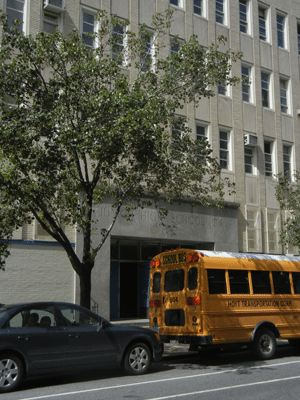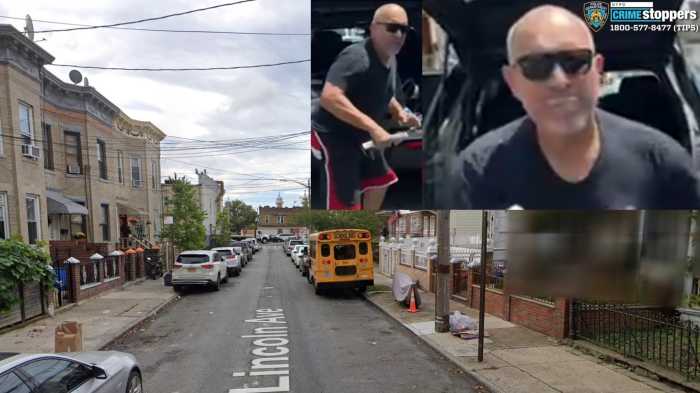
BY ALINE REYNOLDS | Dozens of Downtown families with elementary school-aged children are relieved now that most of their youngsters have been granted a spot in their local public school. What many parents might not know, however, is that, though wait lists for next year’s kindergarten class have shrunk or disappeared, the overcrowding epidemic in the Lower Manhattan’s zoned schools has far from vanished, according to several sources.
Take Battery Park City’s P.S. 276, for example: The elementary school eliminated the wait list for its 2012-13 kindergarten class by setting aside space for a fifth class section next year. This accommodation has a potentially serious ripple effect down the road on I.S. 276, P.S. 276’s middle school and, more immediately, on the school’s first-grade class, according to P.S. 276 principal Terri Ruyter.
The school’s building at 55 Battery Place is designed to accommodate just three class sections per grade, Ruyter noted.
“The challenges come when we have our five kindergarten classes needing to collapse into four first-grade [sections],” she explained. “You end up with 31 or 32 kids in a class.”
By the time this year’s first graders reach fifth grade, Ruyter expects the overcrowding problem to spill into I.S. 276.
Though Ruyter will be making every effort not to resort to cluster rooms, which are traditionally devoted to arts classes, “We’ll have to do some creative room arrangements,” she said. “It’s a really complicated problem.”
But what if all the middle-school classroom space were made available to the lower grades? What if P.S. 276 and P.S. 89, which both share buildings with their middle-school counterparts, could occupy the space currently reserved for I.S. 276 and I.S. 89?
That’s what B.P.C. parent Kara Da Silva recently suggested when speaking with the Downtown Express about school overcrowding in the local elementary schools. Da Silva’s five-year-old son, Joaquin, was number 20 on P.S. 89’s kindergarten wait list for several weeks this spring before finally being offered a seat at the school, which is just steps away from the family’s apartment.
“We don’t need a school on every single corner of every single block, we just have to create space in the schools that currently exist,” said Da Silva. “If we could create one big middle school to accommodate Downtown students, it would automatically free up space.”
Karen Behrens, whose kindergarten-aged daughter Victoria was also wait-listed at P.S. 276 before being offered a seat at the school, backed Da Silva’s proposal.
“It’s an awesome idea,” she said. “I think it’ll relieve the wait lists, but they need to act now to find a space.”
The D.O.E. declined to comment by press time on the parents’ idea of a centralized Downtown middle school. At a recent school overcrowding task force meeting, Elizabeth Rose, formerly from the D.O.E.’s Office of Portfolio Planning, reiterated the Department’s plan to open up the Spruce Street middle school once the younger students reach sixth grade — which would run at odds with a centralized middle school.
Currently, Downtown children have I.S. 276, I.S. 89 and the Lower Manhattan Community Middle School as middle-school options in their neighborhood. Many of them, however, attend District Two schools outside of Downtown, such as LAB Middle School in Chelsea and Simon Baruch Middle School (M104) in Gramercy.
Ruyter noted that a new District Two middle school might be demographically necessary. Due to space limitations, P.S./I.S. 276 will only be able to sustain three kindergarten classes once the sister schools are fully built out by the 2013-14 school year.
That said, the principal already feels attached to her middle-school students and would hate to see I.S. 276 leave the building.
“It would certainly not be my ideal solution,” she said. “Our school’s a K-to-8 school, and we’re building a K-to-8 community.”
P.S. 89, meanwhile, which welcomed four classes’ worth of kindergarteners this year, opened as many as six kindergarten sections in the 2008-9 school year in order to accommodate the area’s influx of children, according to P.S. 89 principal Ronnie Najjar.
The elementary school has managed to shorten its wait list from 30 to 7 children since pre-registration began earlier this spring.
Next year, the elementary school, which like P.S./I.S. 276 was built to house only three classes per grade, will only be able to accommodate three kindergarten classes, since the fourth classroom is being used for an additional section of first grade.
But like Ruyter, Najjar was hesitant about the prospect of a centralized middle school so long as it would mean relocating I.S. 89 middle schoolers to a new building.
“I’m very uncomfortable with the idea of uprooting a school that’s been established in a neighborhood and moving it out to benefit our elementary school,” she said.
Neighborhood middle-school parents, meanwhile, had mixed feelings about a centralized Downtown school.
Though now accustomed to his son’s half-hour commute to LAB, local parent Walter Henning, whose other child attends I.S. 276, said he’d prefer it if both his children attended a middle school in the neighborhood.
“I think I’d go to many more [school events] at 276, because it’s only a few blocks away, than at LAB,” he said. “You do tend to find you go to more things, because you know more of the parents when they’re neighborhood parents.”
Egor Lamser, whose two sons also attend LAB, said the family automatically ruled out I.S. 89 and I.S. 276 because the Lamser children wanted to be in a different building from where they went to elementary school.
But Lamser said he’s not as concerned about the distance as he is about the schools’ quality of education. The LAB children take the M20 bus together every morning and afternoon as if it were a yellow school bus, he said.
“It’s like door-to-door, as far as LAB is concerned,” he said.
Lamser said of a new Downtown middle school, “If all you’re going to do is slap together a middle school just to give them more space and to make it more convenient for the people Downtown, I don’t think it’s a good idea.”




































